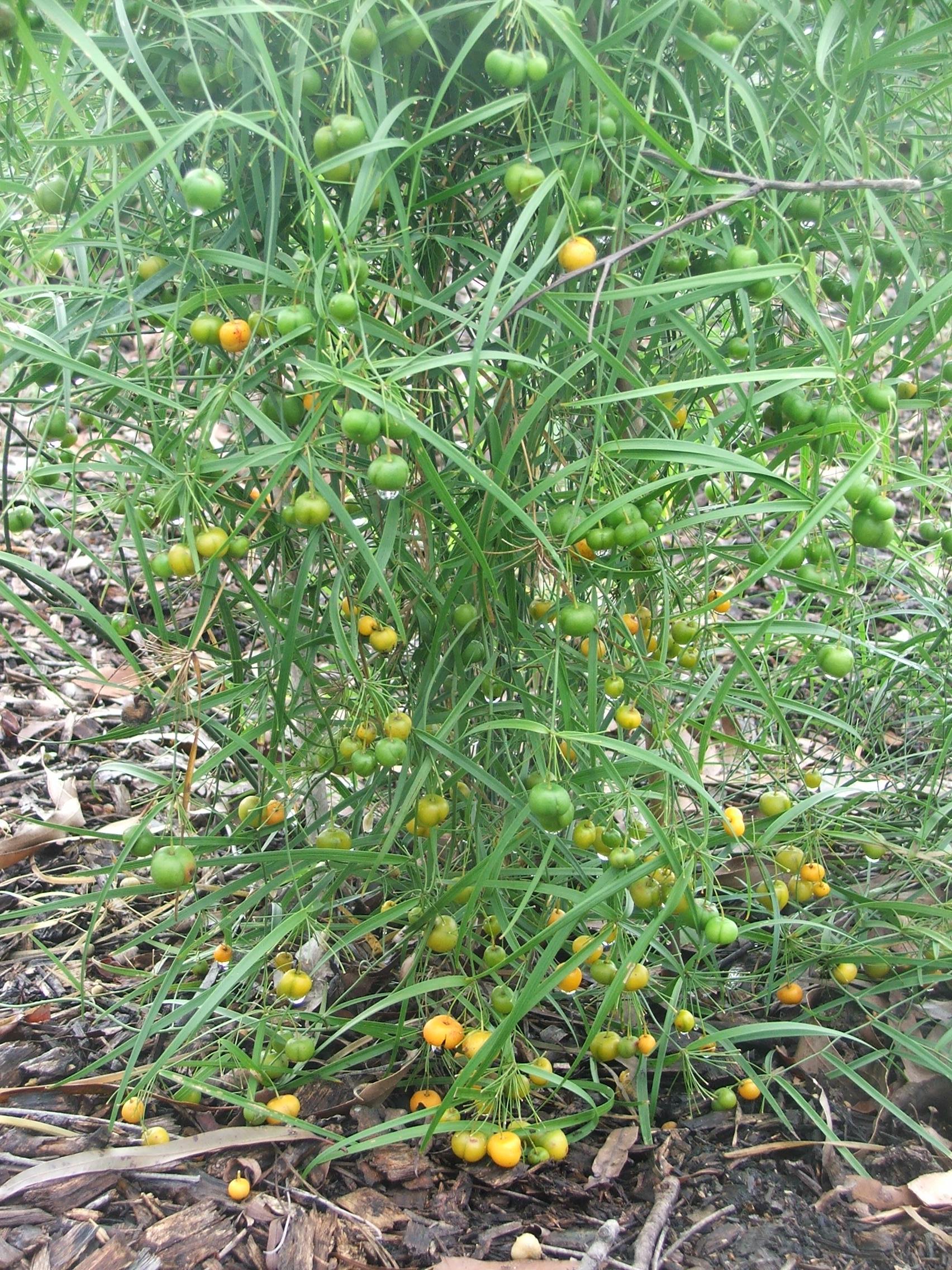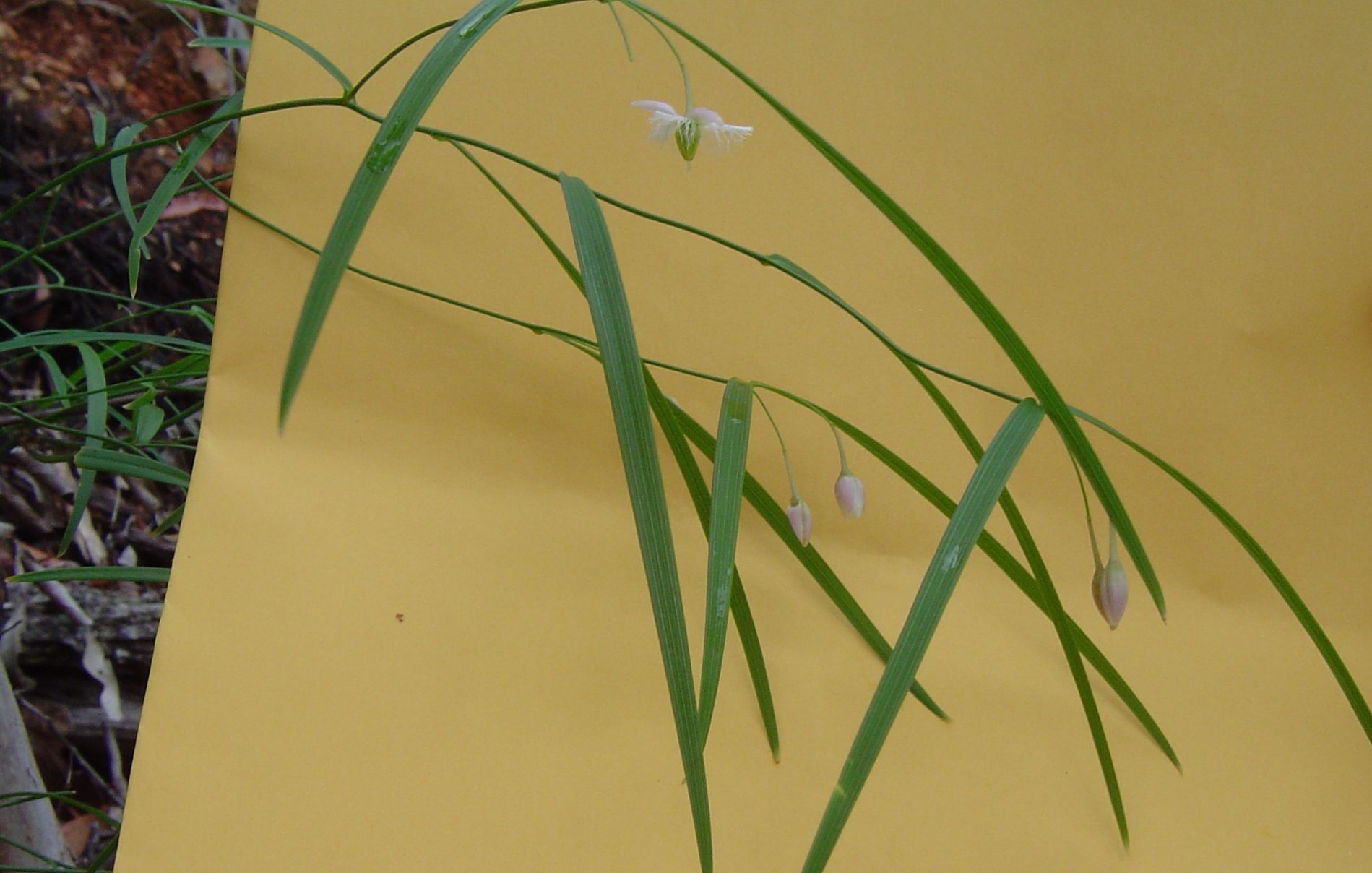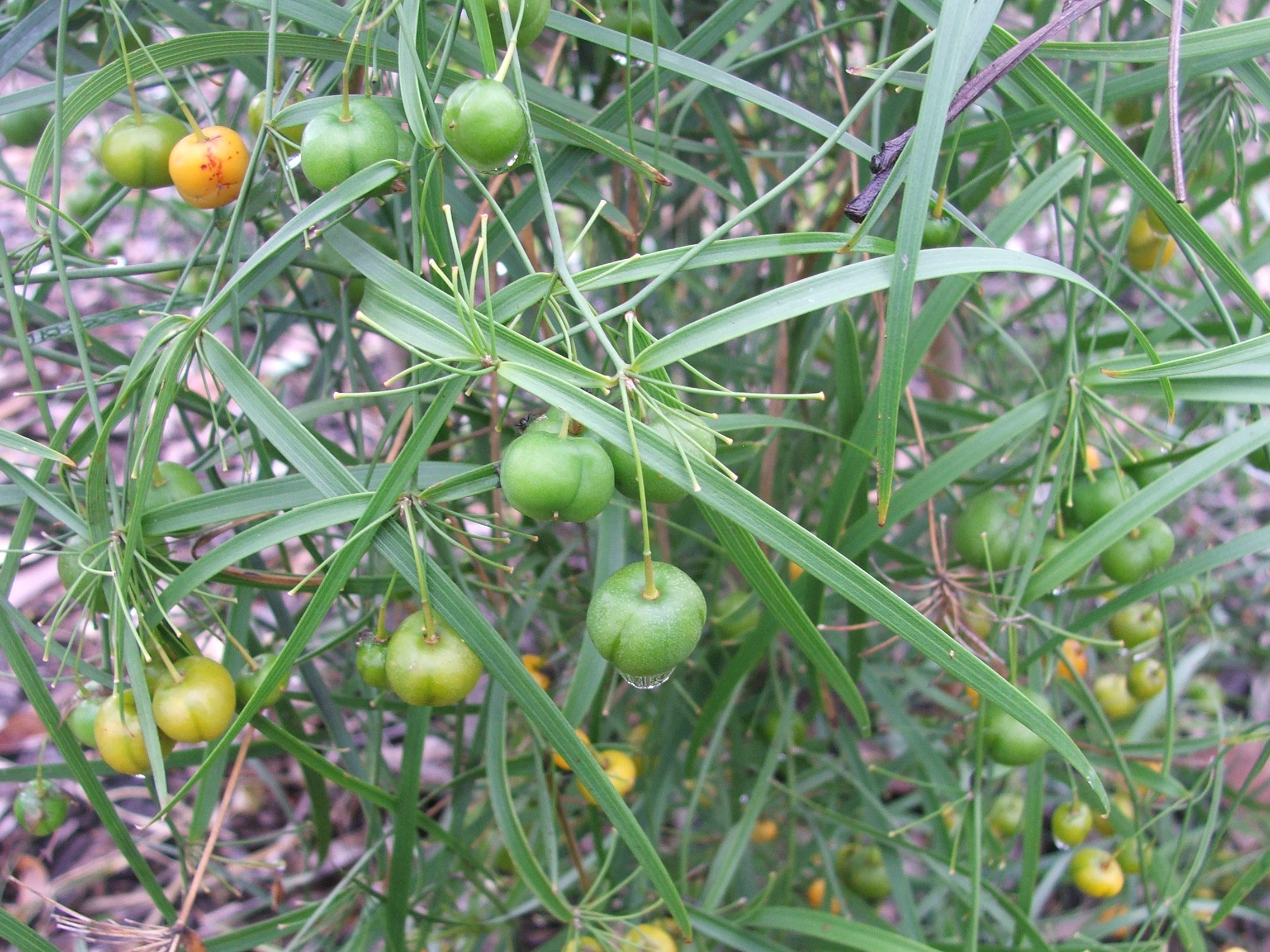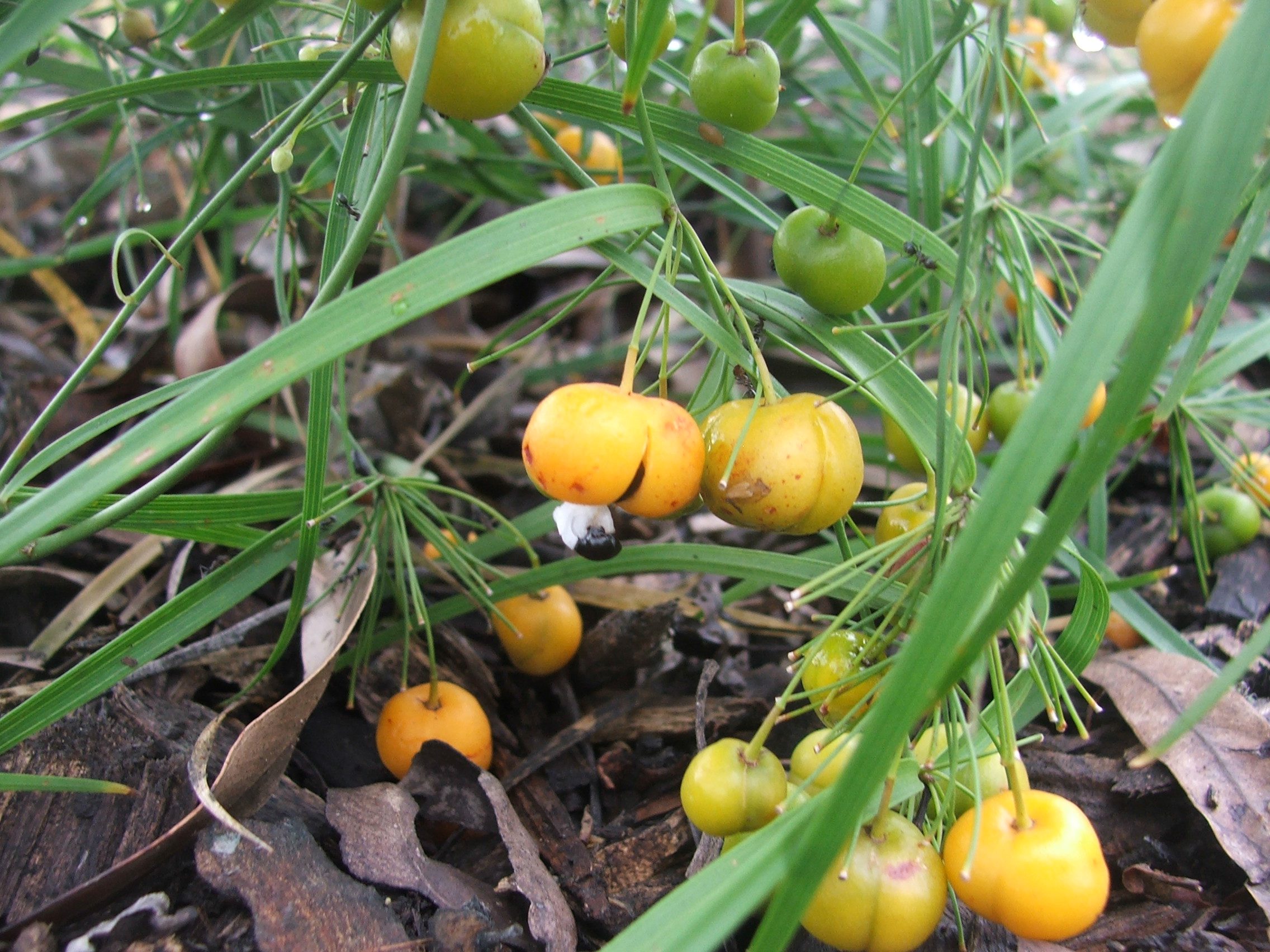Wombat berry
Eustrephus latifolius, Fam. Laxmanniaceae








Slender, branched, perennial climber with tuberous roots.
| Weed Category: | |
| Weed: | No |
| Form or habit: | Vine (Climbing, Twining or groundcover) |
| Family: | Laxmanniaceae |
| Leaf: | Alternate, linear to broadly ovate, 2.5-12 x 2-35mm, venation parallel with several veins conspicuous on underside, sessile or with a petiole up to 1mm long. |
| Flower conspicuous: | Conspicuous |
| Flower colour: |
White, Pink |
| Flower description: | Axillary cymes of a few, small pink to white flowers with fringed petals. August to June. |
| Fruit conspicuous: | Conspicuous |
| Fruit colour: |
Orange, Yellow |
| Fruit: | |
| Fruit description: | Fleshy, bright yellow orange capsules, 1-2cm in diameter. Capsules split to reveal the black seed and fleshy white aril. Any month of the year. |
| Habitat: | Gallery (riverine or riparian) forest, rainforest, woodland. |
| Distribution | Queensland, New South Wales, Victoria, New Guinea. |
| Food source for: | Fruit eaten by the Lewin's honeyeater and Australian king parrot. Larval food plant of the ivy leafroller moth Cryptoptila immersana and the beetle Aproida balyi. |
| Toxicity: | No toxicity known |
| Origin: | Australia, New Guinea. |
| Notes: | Most soils are suitable but it requires fairly good drainage, will grow in sun or semi-shade. Seed germinates readily. The tubers are edible raw and quite sweet. |
| Information sources: | Melzer R. & Plumb J. (2007) Plants of Capricornia. |